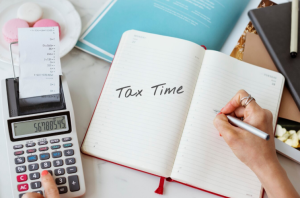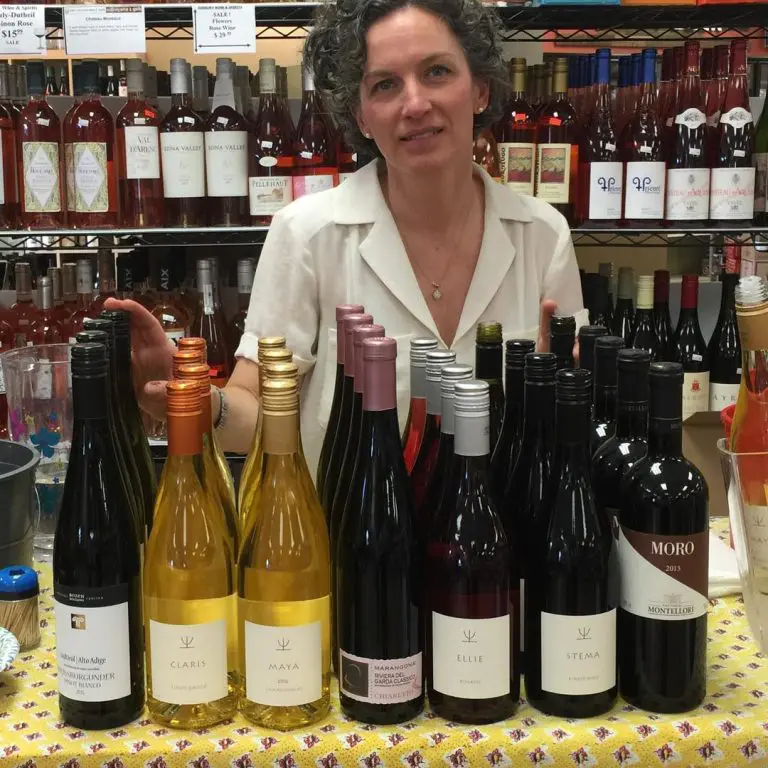Retail trade shows aren’t what they used to be. The old playbook – setting up a basic booth and collecting business cards – is dead.
But here’s what’s interesting: The remaining 27% will see an average return of 400% on their investment. These winners aren’t just participating – they’re creating experiences that stop people in their tracks.
The retail trade show landscape is changing fast. Hybrid events are becoming standard. Sustainability isn’t just nice-to-have – it’s expected. And retail’s big on personalization through technology isn’t optional anymore.
This guide breaks down exactly how business owners like you can join the 27% tech companies that dominate the world of trade shows. You’ll learn specific strategies for booth design, marketing tactics that work, and how to use cutting-edge technology to multiply your results.
The difference between success and failure at 2025’s trade shows won’t be your budget. It will be your strategy. And that’s exactly the high point of what we’re going to build together.
Are you ready to turn your next trade show from an expensive gamble into a predictable success machine?

Lower your delivery costs by 23%
How we reduce costs:
- No delivery vehicle expenses
- Optimized local routes
- Pay-per-delivery model
- Average 23% delivery cost reduction
Effective Booth Design Strategies to Stand Out in the Retail Industry
Bold signs. Clear branding. Attract with style.
Product focus. Interactive demos.
Memorable looks. Engage visitors.
Visual Appeal and Branding for Retail Marketing Strategy
At a trade show, first impressions matter. What draws people in? Clear signs and bold use of colors. Your brand’s colors should be instantly recognizable. Signs should not be cluttered. Clarity wins. Visitors should know your brand immediately. Think about sign placement. Place them high so they stand above the crowd.
An open booth design can invite people. Barriers stop people. You should create a welcoming space. Think of it as an open house. It should feel easy to walk in and explore. Include interactive elements like digital screens. These could display you the latest the latest industry trends and products or show off customer testimonials. Interactive product demos also hold attention. They make visitors stay longer and remember more.
Product Presentation in the Retail Industry
Spotlighting is key for showcasing key products. You should make sure the light highlights your product’s unique features. It is best to use signs to detail product benefits. This helps when it’s busy, giving visitors quick info. For small or intricate items, transparent displays work best. Visitors can get a closer look and understand the details.
Have some items available for people to touch. It creates a stronger memory and sparks conversations. Hands-on experiences often lead to future sales. You can make these areas prominent in the exhibit space. It’s not just about telling people about your product. Show them why it stands out.
The Art of Creating a Memorable Booth Layout
A good booth engages all senses. Consider sound, scent, and touch. Each adds a layer of experience. Soft background music city center sets a mood. It shouldn’t be too loud. Keep it inviting. Scents can evoke emotions, too. But stay subtle. They shouldn’t overpower nearby booths.
It is best to choose furniture that fits your brand’s image. Modern, sleek couches give a tech vibe. Rustic tables, a homey feel. Match it to your brand story. You can create small spaces for private talks with potential clients. They give a professional edge.
Using Colors Strategically
Colors evoke emotions and drive engagement. They guide the visitor’s eye where you want them to look. Blue can convey trust and calmness. Red is energizing and draws attention. Use your brand colors, but think of contrast. Make sure key areas pop. A touch of an accent color can highlight specific products or interactive stations.
Reflections on Booth Design Success and Challenges in the Retail Industry
Creating a standout booth design involves weighing options. Dynamic displays and unique designs outshine standard setups. But they come with a cost. They require more setup time and a higher budget. Balance is needed. The result must justify the investment.
Engaging Trade Show Marketing Tactics to Get Noticed by Retail Buyers
Announce and promote your booth well before the event.
Create interactive activities at your booth to engage visitors.
Use branded merchandise as a lasting reminder of your products.
Pre-Event Promotion
Social Media Announcements
You can start by using social media platforms like LinkedIn, Facebook, and Twitter to let everyone know you’re participating in the trade show. Mention your booth number. Post regularly leading up to the event to keep anticipation high. It is best to use engaging content such as behind-the-scenes preparations or sneak peeks of what will be offered.Personalized Invitations
Send out invitations to your key contacts and potential clients. The goal is to make each person feel valued. Emails should be personalized with specific mentions of past interactions or tailored offers that relate to their needs. Consider mailing hard copies with a unique design, which can stand out even more.Exclusive Early-Bird Promotions
Offer time-sensitive deals or discounts specifically for trade show attendees. This could motivate people to visit your booth first. Use email newsletters or direct mail campaigns to promote these offers. Make sure these promotions are clear and offer real value to attract attention.
On-Site Engagement Activities
Live Demonstrations and Mini Workshops
Schedule live demonstrations of your product or services throughout the day. Use prominent signage to announce these times. Demonstrations should be interactive and showcase unique features. Mini workshops or talks can also work well, offering industry insights or practical tips that relate to your business.Contests and Interactive Games
Contests are excellent for drawing people in. Create a game that relates to your product or brand. It could be something as simple as a quiz or even a creative social media challenge where attendees post photos with your products or booth. Offer desirable prizes but also keep your brand memorable.Branded Giveaways
Use giveaways that serve a purpose and keep your brand in the user’s memory. Items like tote bags, reusable water bottles, or tech accessories that feature your logo can be effective. Ensure that these items are usable and of good quality. Distribute them at strategic times to draw in more visitors.
Timing and Coordination
Strategic Scheduling
You can plan your activities during high-traffic times. Coordinate with the trade show’s schedule to decide when your events might attract the most visitors. Not all time slots are equal – lunchtime or afternoon breaks might work best.Staff Training
Your team should be well-prepared to handle these activities. You should train staff on the details of any demonstrations, rules of contests, and how to engage effectively with visitors. Clear communication among team members ensures smooth operation and enhances the visitor experience.
Leveraging Technology at Trade Shows for Maximum Impact
Tech creates immersive experiences that draw in visitors.
Data collection refines future trade show strategies.
Drives customer engagement with innovative tools.
Use Technology to Enhance Experience
Good experiences keep visitors around. Virtual and augmented reality can make it more exciting. Imagine using these to let potential customers “walk through” your product or see how it works in real life. This isn’t just about showing off cool gadgets. It’s about giving people an experience they’ll talk about.
Another efficient option is installing tablets or digital kiosks at retailers. They allow visitors to browse your products, download information, or even place orders. It’s like having a 24/7 salesperson.
Gather and Analyze Data
Understanding your audience is the linchpin here. Use digital sign-in forms at your booth. They’re the modern-day business card exchange. Not only are these quick, but they also streamline lead capture. Integration with your CRM system makes follow-up a breeze.
Apps and QR codes replace stacks of brochures. Attendees can scan and get all the info directly on their devices. This is clean and effective. Track which materials get the most clicks to refine strategies. 1 in 4 people are keen on tech solutions that save time.
Analyzing engagement metrics helps understand future trends and improve future events. Advanced analytics offer real-time attendee insights. 81% of exhibitors follow up with emails based on captured data, turning leads into customers.
Networking and Partnership-Building Tips for Success
Networking is crucial for business growth and relationship-building.
Effective communication and preparation are key to standing out.
Partnerships can be the backbone of sustained market presence.
Planning and Preparation
Research Potential Business Partners: Identifying who you want to connect with at the event is crucial. Dive into the background of companies and key figures attending the show. Understand their recent projects and needs. This research allows you to customize your approach and tailor conversations effectively.
Schedule Meetings in Advance: You shouldn’t wait until the day of the event to reach out. Use the event’s platform or professional networks like LinkedIn to schedule times. Everybody’s busy, especially at trade shows. Booking meetings in advance helps ensure dedicated time with the people you want to meet.
Create Personalized Media Kits or Portfolios for Key Contacts: Handing over generic flyers doesn’t cut it anymore. Tailor your materials to speak directly to the potential partner’s interests and how your products or services can address their specific business challenges. You can use eye-catching design but focus more on clarity and value propositions.
Prepare a Concise Elevator Pitch Highlighting Your Business Strengths: Boil down your business to its core strengths in a 30-second explanation. The pitch should be memorable and articulate what makes your business unique. Keep it clear and tailored to the people you’re speaking to, showing you understand their needs and your solution’s impact.
Effective Communication Skills
Actively Listen and Ask Open-Ended Questions: Engage your audience by showing genuine interest in what they have to say. This approach helps uncover real needs and enables you to present your business solutions more effectively. Listening actively not only builds rapport but also increases the chances of forming lasting partnerships. This practice aligns with the idea that 80% of industry professionals see networking as essential for career success.
Be Prepared to Address Business Challenges and Solutions: Understand that potential partners may want to delve deeper into the challenges they face. Showing you have insights into their industry problems and offering viable solutions positions you as a knowledgeable player, making collaboration more appealing.
Follow Up Promptly with Personalized Notes or Emails After the Event: You should make sure you follow up within a day or two after the event. Personalize your messages to acknowledge specific points from your conversations to reinforce your engagement and interest. Statistically, 40% of in-person meetings can result in new customers, emphasizing the importance of persistent communication follow-ups.
Building Long-Term Relationships
Use Face-to-Face Interactions to Foster Stronger Relationships: While online networking is popular, face-to-face meetings still have unrivaled value. Almost 100% of professionals believe in-person meetings build stronger, lasting relationships. Use these interactions at trade shows to lay the foundation for lasting partnerships.
Harness Technology for Continued Engagement: After meeting in person, leveraging digital platforms like LinkedIn or industry-specific forums helps maintain those connections. Regular interaction keeps you and your business top-of-mind for your network, enhancing chances for future collaboration.
Value Networks and Data Collaboration: Consider the real benefits of value networks, which connect individuals within industries for mutual benefits. Sharing data can deepen insights, leading to improved business strategies, stronger market presence, and new revenue streams through the development of data products.
Trends and Predictions for Retail Trade Shows in 2025
Hybrid trade shows blend in-person and virtual formats.
Focus on sustainability with eco-friendly practices.
Personalization driven by data and AI for better attendee engagement.
Shift Towards Hybrid Events
In 2024, the trade show landscape evolved rapidly. Hybrid formats gained momentum. This change offered both in-person and online experiences, significantly increasing accessibility. Many organizers realized that the latest technologies in live-streaming and virtual reality could extend their reach beyond physical walls. Trade shows began incorporating these features to enhance attendee involvement. A notable development was how remote networking became a game-changer. Participants could effortlessly interact with industry professionals and a global audience.
For instance, many global trade shows in 2024 tested these waters by integrating real-time discussions through platforms like Zoom and VR meetings. Some events even saw a 30% increase in attendees because of these added virtual elements. As we look forward to 2025, it’s clear that hybrid events will remain a staple due to their widespread benefits. If I were advising businesses, I’d suggest leveraging virtual tech to expand their network reach and ensure that educational seminars and follow-up educational sessions maximize engagement beyond just the event days.
Emphasis on Sustainability
The past year saw a striking push towards sustainable practices at trade shows. Exhibitors increasingly adopted eco-friendly materials for their booths, shifting from traditional printed brochures to digital versions. This change was not just about being green; it resonated well with attendees who prioritize sustainability. Retail trade shows also saw collaborations between like-minded exhibitors successful retailers and suppliers, forming a united front to promote eco-friendly practices.
This year, the trend continues. Exhibitors are highlighting sustainable features within their product lines. They aim to not only appeal to environmentally conscious stakeholders but also to set benchmarks in the consumer goods industry. Data suggests that trade show participants are twice as likely to engage with brands showcasing clear commitments to sustainability.
Increased Personalization
Personalization at trade shows took center stage in 2024, driven by advances in technology. Businesses tapped into data-driven insights to craft tailored experiences. Brands used detailed customer segmentation to refine their outreach efforts significantly. This resulted in interactions that felt uniquely personal, resonating better with visitors. AI-driven tools were pivotal, enabling real-time customization of visitor experiences. Brands reported seeing up to 40% higher engagement levels due to these personalized interactions.
As we move into 2025, expect this focus to deepen. Data analytics will become even more crucial in understanding attendee preferences. And AI will continue to evolve, providing insights fast. Brands should harness these technologies to anticipate visitor needs before their physical or virtual arrival. Implementing such strategies will help create memorable, individualized visitor experiences leading brands, increasing the likelihood of positive outcomes from trade show participation.
Retail Innovation Conferences and Retail Trade Shows with Industry Leaders
Success at retail trade shows in 2025 comes down to smart planning and consistent execution. Your booth design, marketing tactics leading the event side, and networking skills work together to create a strong presence. The right mix of technology – from virtual reality demos to digital lead tracking – helps you stay ahead.
But the real game-changer? It’s how you adapt to the new trends. Hybrid events let you reach both in-person and online audiences. Sustainable practices show consumers your commitment to responsible business. Personalized experiences make every visitor feel valued.
The tools and strategies we’ve covered aren’t just tips – they’re your roadmap for trade show success. Start by picking one area to improve. Maybe it’s redesigning your booth layout, or creating a pre-show social media plan. Test different approaches, measure results, and adjust as needed.
Remember: trade shows are more than just selling and networking opportunities. They’re chances to build meaningful relationships with, learn from others, and position your business as an industry leader. Take these insights, make them your own, and watch your trade show presence transform from good to outstanding in 2025.



























